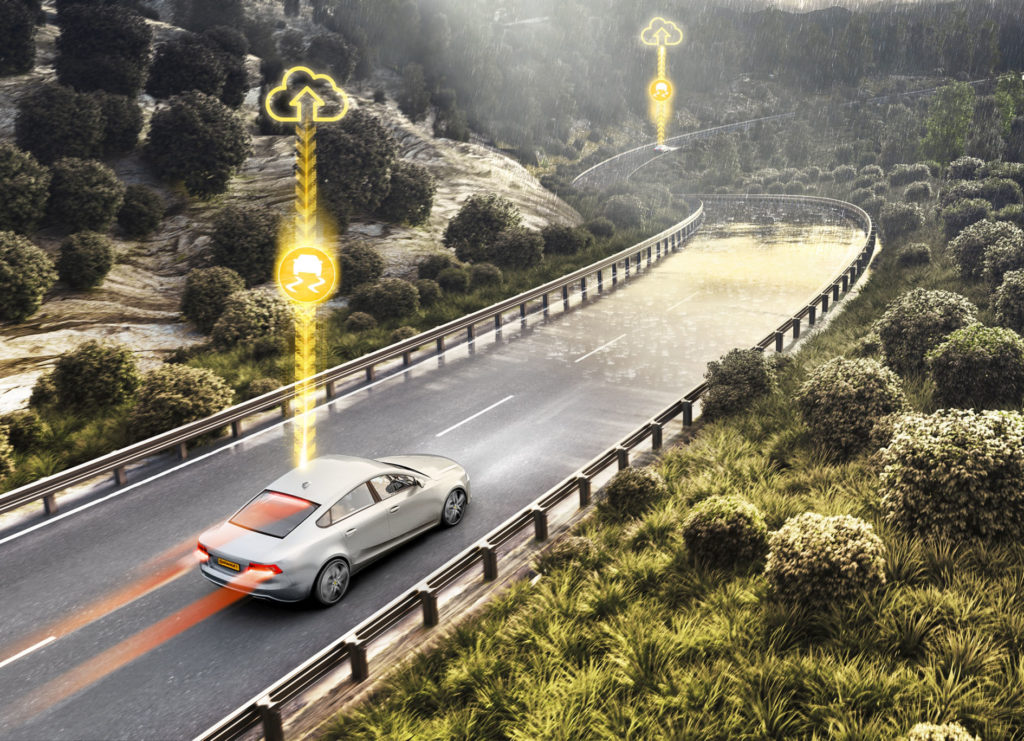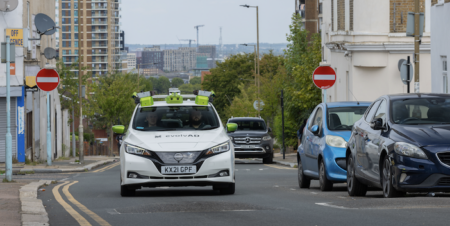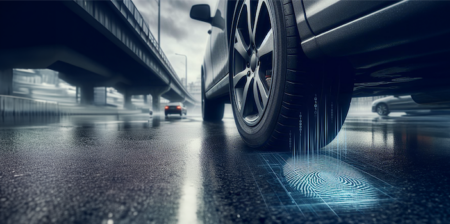From unfamiliar roads, to damaged road surfaces, to differing road traction conditions, unpredictable road conditions require maximum driver concentration to help ensure a safe journey. Thus technology company Continental has developed eHorizon, a function that enables cars to take pre-emptive action against potential risks on the roads. A network of vehicle dynamics technology including matched sensors, data processing, and assistance systems enable a vehicle equipped with the system to calculate a safe and efficient travel speed as it anticipates what to expect from the bends and road surface conditions ahead.
Continental’s eHorizon system functions as an anticipatory, virtual sensor by networking several established technologies. For example, the Road Condition Observer uses systems already present in vehicles, such as Electronic Stability Control (ESC) and camera systems, to classify the road conditions as dry, wet, very wet (risk of aquaplaning), snow-covered or icy. Using an estimated friction coefficient based on this classification, the system can predict how well the tyres will grip the respective section of road. The Road Condition Observer continuously transmits the friction coefficient data in near-time to the Continental.cloud, where information on the friction coefficients of other vehicles as well as weather data, such as temperature and precipitation, are also collected.
Also in the cloud, eHorizon can process data collected from the entire vehicle fleet with the aid of artificial intelligence and other technologies, which again increases the reliability of the predictions. Continental uses technology such as artificial intelligence to create models which are able to detect road objects and predict arising hazardous situations. These models can react to changing conditions and use input and output data to adjust functions through learning tasks. Additionally, neural networks are used for image processing and object detection. The appropriate data packages with all the relevant information are then transmitted back to vehicles that are currently travelling along the relevant section of road. In turn, the eHorizon client receives and processes this data in the car.

“Think of the eHorizon as an additional, virtual sensor that networks data from various different sources, assesses it intelligently and relays it to other vehicles. We are thereby taking road safety to a new level under all conditions,” stated Anton Klöster, eHorizon product manager at Continental.
eHorizon is already available in commercial vehicles, supporting truck drivers in achieving better fuel economy and enabling automated driving functions. However, evaluation of the road conditions is a new capability. In the future, as soon as it is possible to use the data from the Road Condition Observer to create dynamic friction coefficient maps, eHorizon will include this new information in its calculations for greater road safety and comfort, combining swarm intelligence (many cars reporting up-to-date information on friction coefficients from many roads), weather data, and information on road surface conditions from additional sources to provide accurate predictions. eHorizon therefore has accurate knowledge of the road ahead, as well as an understanding, not only of its static properties (curve radii, gradients, slopes) as in the past, but also of the current road conditions.
PreviewESC adapts vehicle speed
This information from eHorizon is critical to PreviewESC, an additional ESC function developed by Continental. As soon as eHorizon makes the data regarding the friction coefficient and curve radius of the road ahead available, PreviewESC compares this data with the actual vehicle speed to determine whether the vehicle is, for example, travelling too fast to make it safely around the next bend. In such cases, PreviewESC – depending on the configuration of the vehicle manufacturer – will warn the driver and, if necessary, automatically brake slightly to adjust the vehicle speed.
“PreviewESC provides support in situations in which the driver is approaching the bend too quickly, whether because it’s a blind bend, the driver is distracted, or he or she misjudged the road surface conditions,” explained Jakov Sprljan, technical project manager for PreviewESC at Continental.
For example, if the bend is wet or icy, such a braking intervention will happen earlier than under dry road conditions. This situation-specific, anticipatory function will also be a requirement for the automated and autonomous driving of the future. This is because in order to select the respective optimal driving strategy in all conditions, such cars have to know not only the exact route ahead, but also the amount of available grip on the road. Thanks to the anticipatory speed adjustment, eHorizon can lower the likelihood of an emergency manoeuvre.
A variety of new functions
In addition to PreviewESC, further new functions will be possible in future with the aid of eHorizon. The system can, for example, regulate the optimal timing of emergency braking because such braking manoeuvres need to be initiated at different times, depending on the road’s current friction coefficient to safely avoid a collision with an obstacle. Even the tail end of a traffic jam that is not yet visible from the vehicle can, for example, be accurately predicted with the aid of eHorizon.
eHorizon is one building block of vehicle-to-X (V2X) communication and extends and supports vehicle-to-vehicle communication in providing better coverage and full functionality to enhance safety using technologies that are ready and available.





